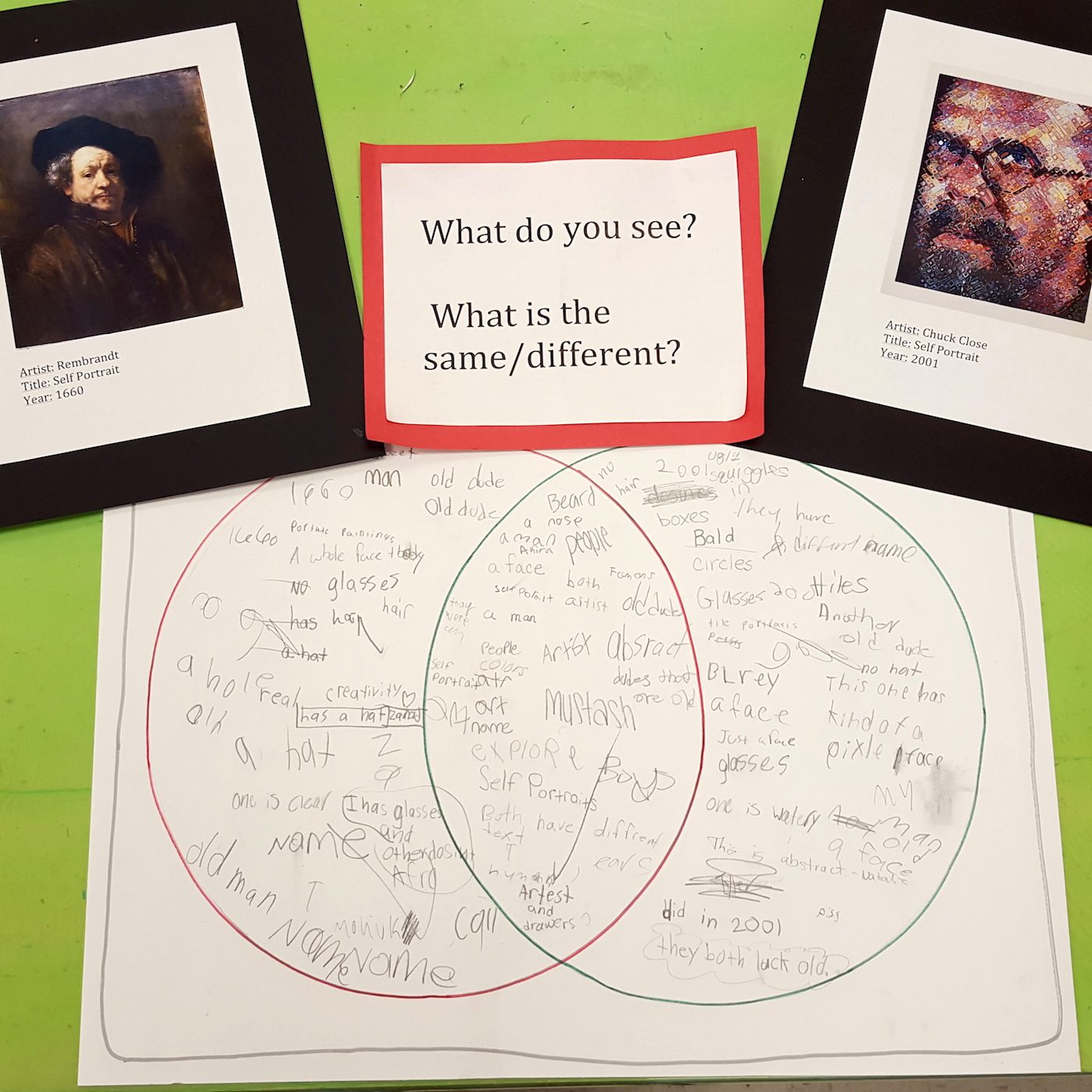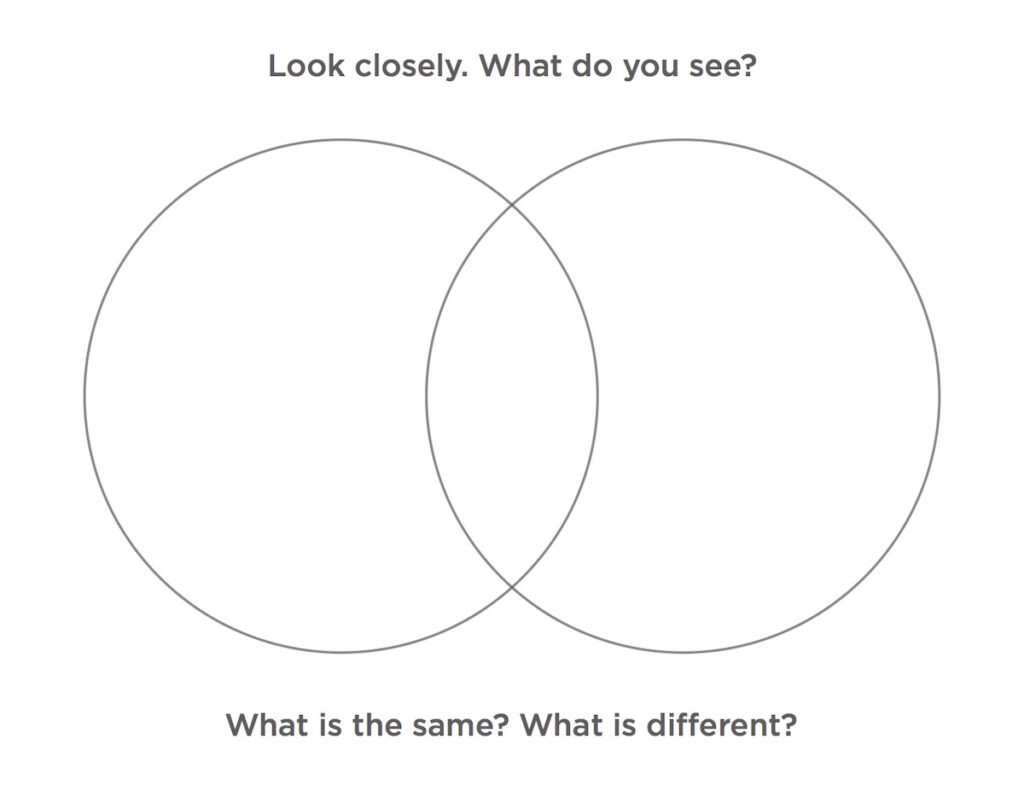I have always worked hard to create beautiful art displays for my school. A couple of years ago, though, I noticed that most people do not stop to explore the artwork. No matter how carefully I mounted the work, or how bright and inviting the display was, they just walked by.
I wondered if there was a way to pull viewers in.
Could I get my school community more involved in exploring my students’ work?
In other words, how could I make my displays more interactive?
Over time, I developed several different types of interactive displays. Three that have been particularly successful are “Venn Diagrams,” “Storytelling,” and “Compliment the Artist.”
1. Venn Diagrams
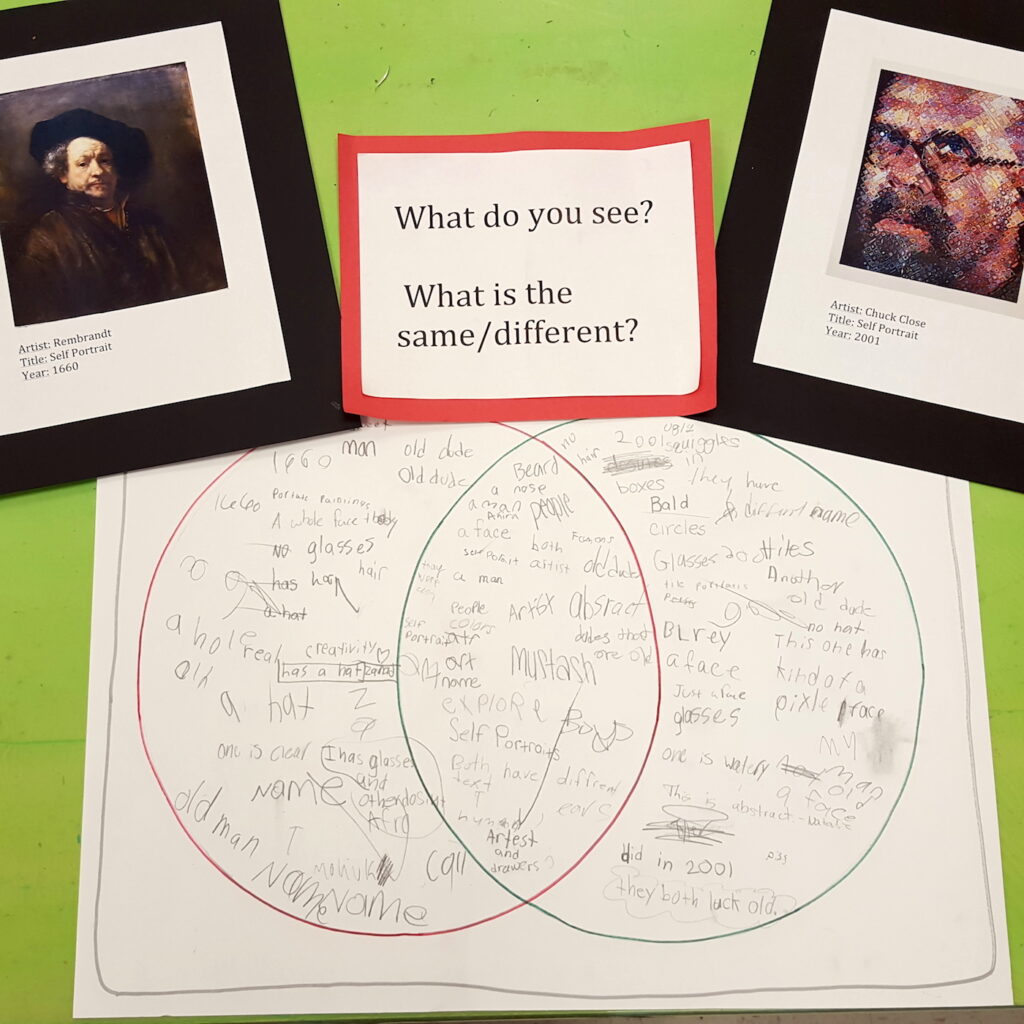
One of my favorite ways to engage people in exploring art is to invite them to fill out a Venn Diagram.
If you are unfamiliar, a Venn Diagram consists of overlapping circles used to compare and contrast different things. The portions of the circles that overlap represent similarities. The independent portions represent the unique attributes. These can be used to compare any two images, including student works or masterworks.
These are always a big success. Without exception, the diagram is filled within a day or two. Download a blank Venn Diagram to use in your display below!
2. Storytelling
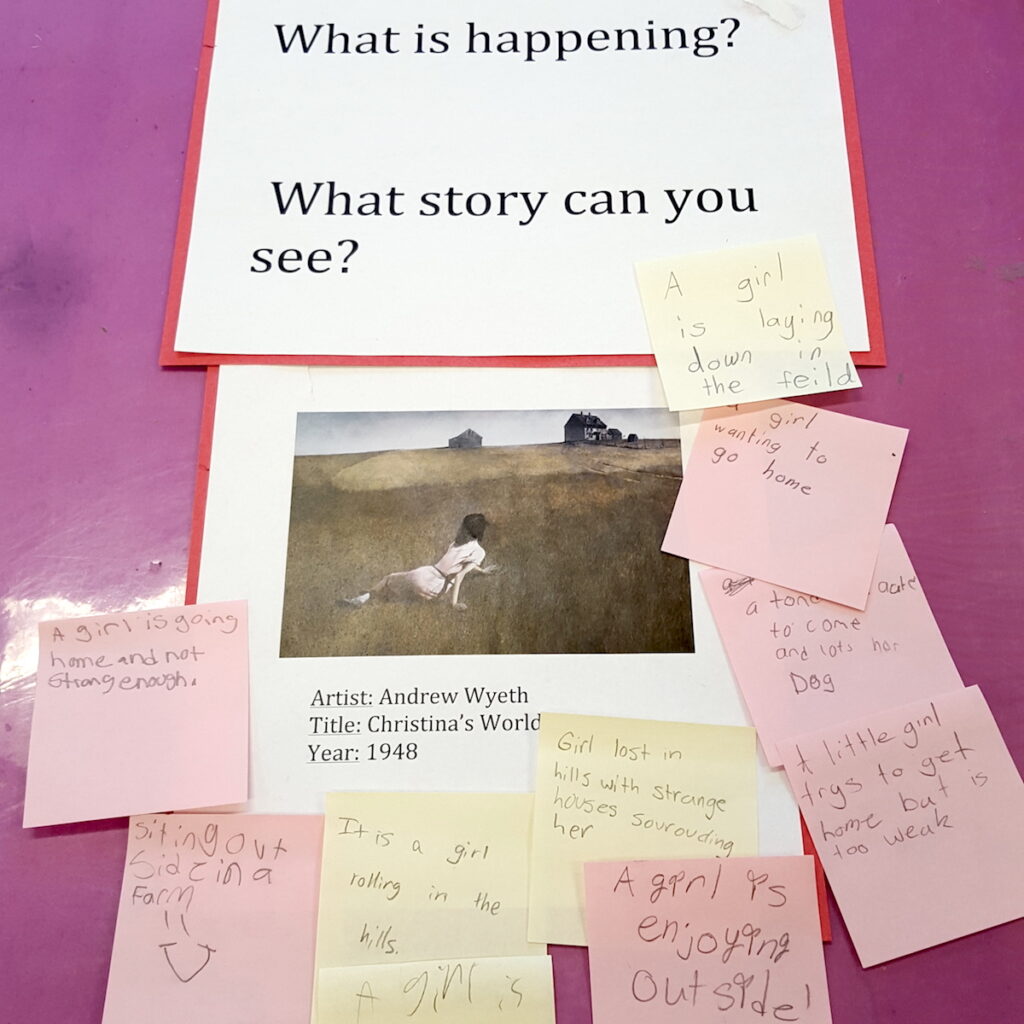
Storytelling displays are another way to get people engaged in the work.
Hang a paper under the artwork you want people to explore, and ask “What story do you see?” Asking viewers to tell a story about the work pulls them in. This encourages them to look closely and ask a variety of questions.
3. Compliment the Artist
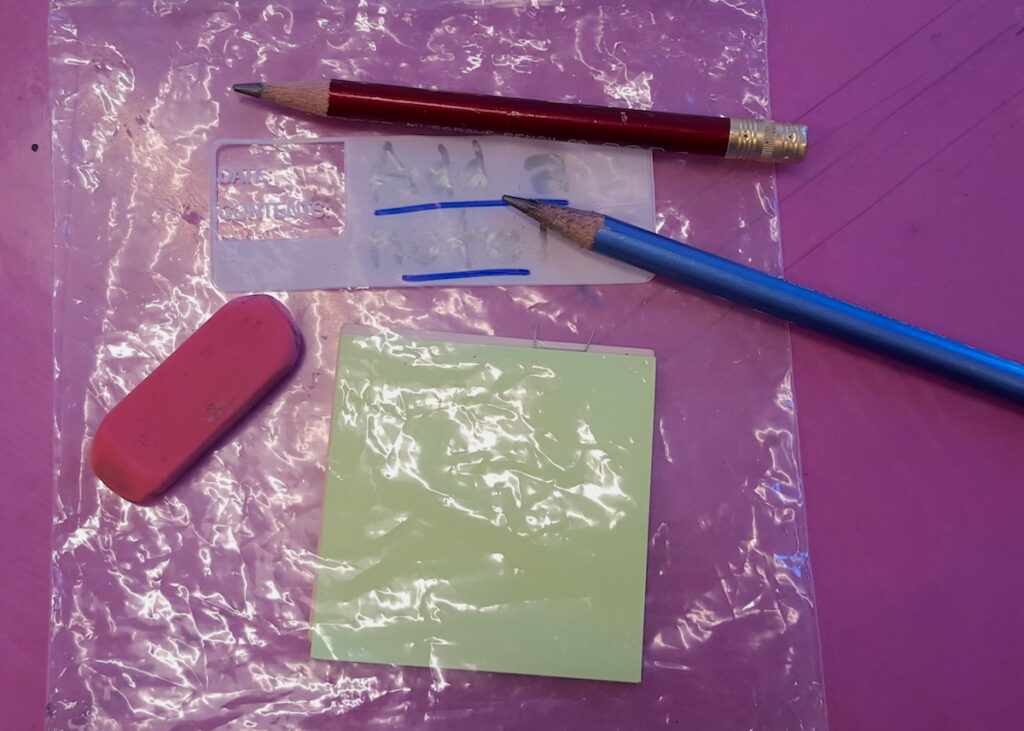
Another successful interactive display idea is “Compliment the Artist.”
Hang sticky notes and pencils in a bag by the display. Invite students and teachers to stick a note by an artwork they want to compliment. It’s best to use sticky notes for this just in case someone says something unkind or inappropriate. That way, you can easily remove the offending note. You want it to stay positive!
These simple displays engage the entire community in a meaningful exploration of art. I have gotten rave reviews on these for years. Displays of student art may be the only way many members of the community learn about the great things happening in the art room. By making displays more interactive, many more people stop to look at the artwork. And that’s always a good thing!
Have you tried a different type of interactive display?
How do you get people looking at the artwork displayed in your building?
Magazine articles and podcasts are opinions of professional education contributors and do not necessarily represent the position of the Art of Education University (AOEU) or its academic offerings. Contributors use terms in the way they are most often talked about in the scope of their educational experiences.
